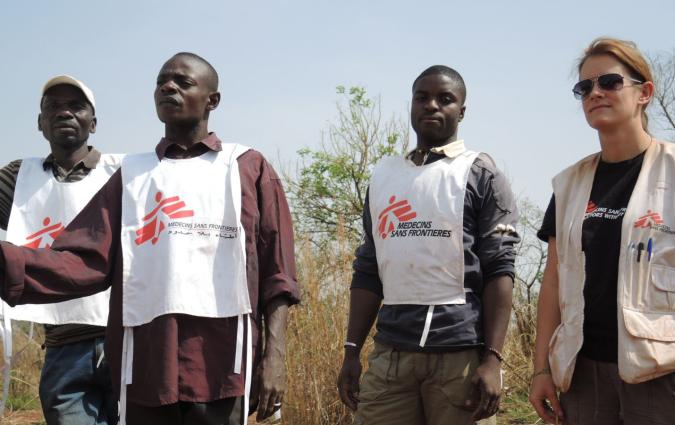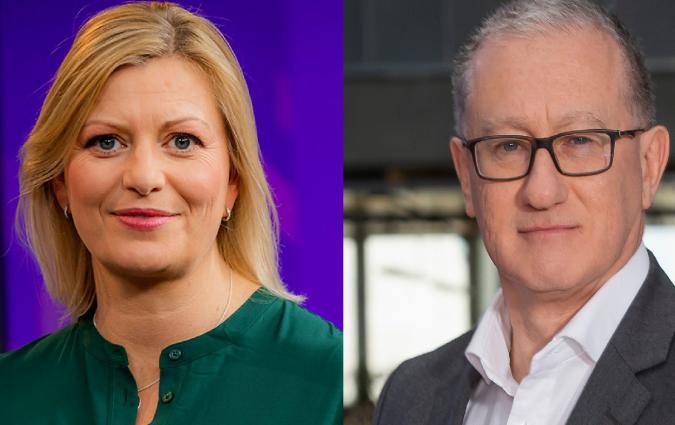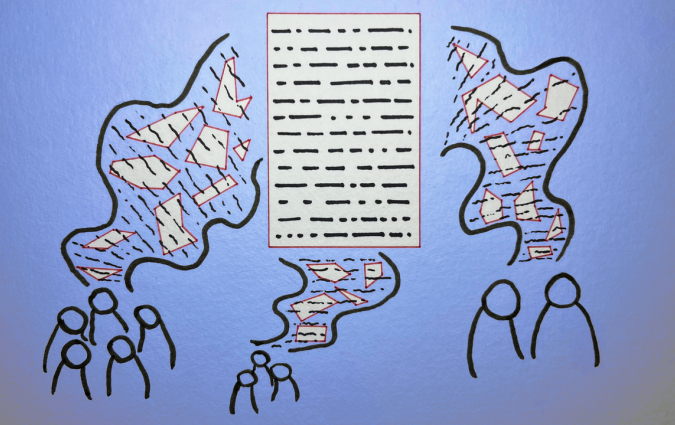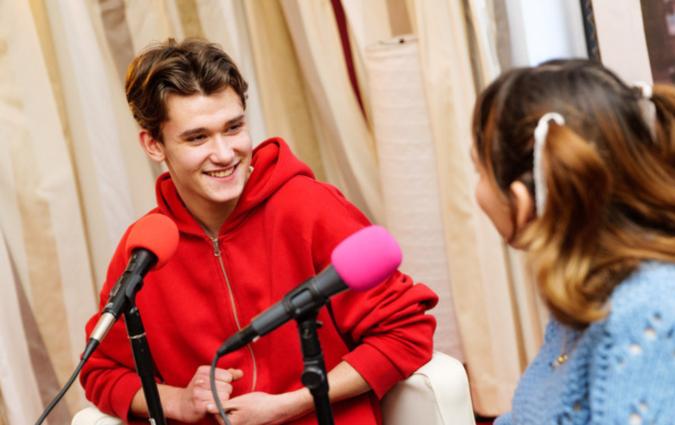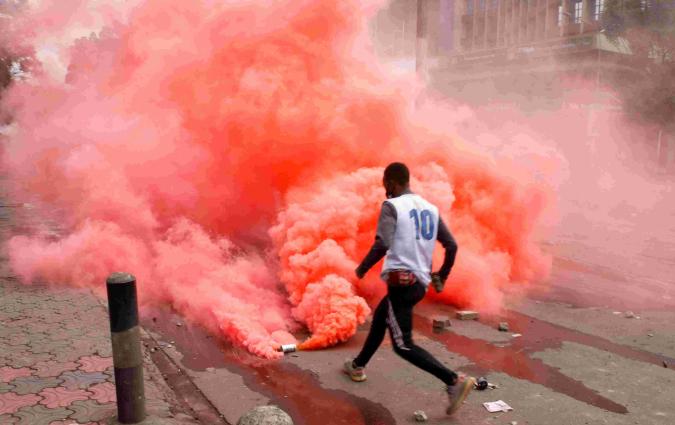How to design a newsroom building for the digital age: Insights from 'Le Monde', AFP and Publix
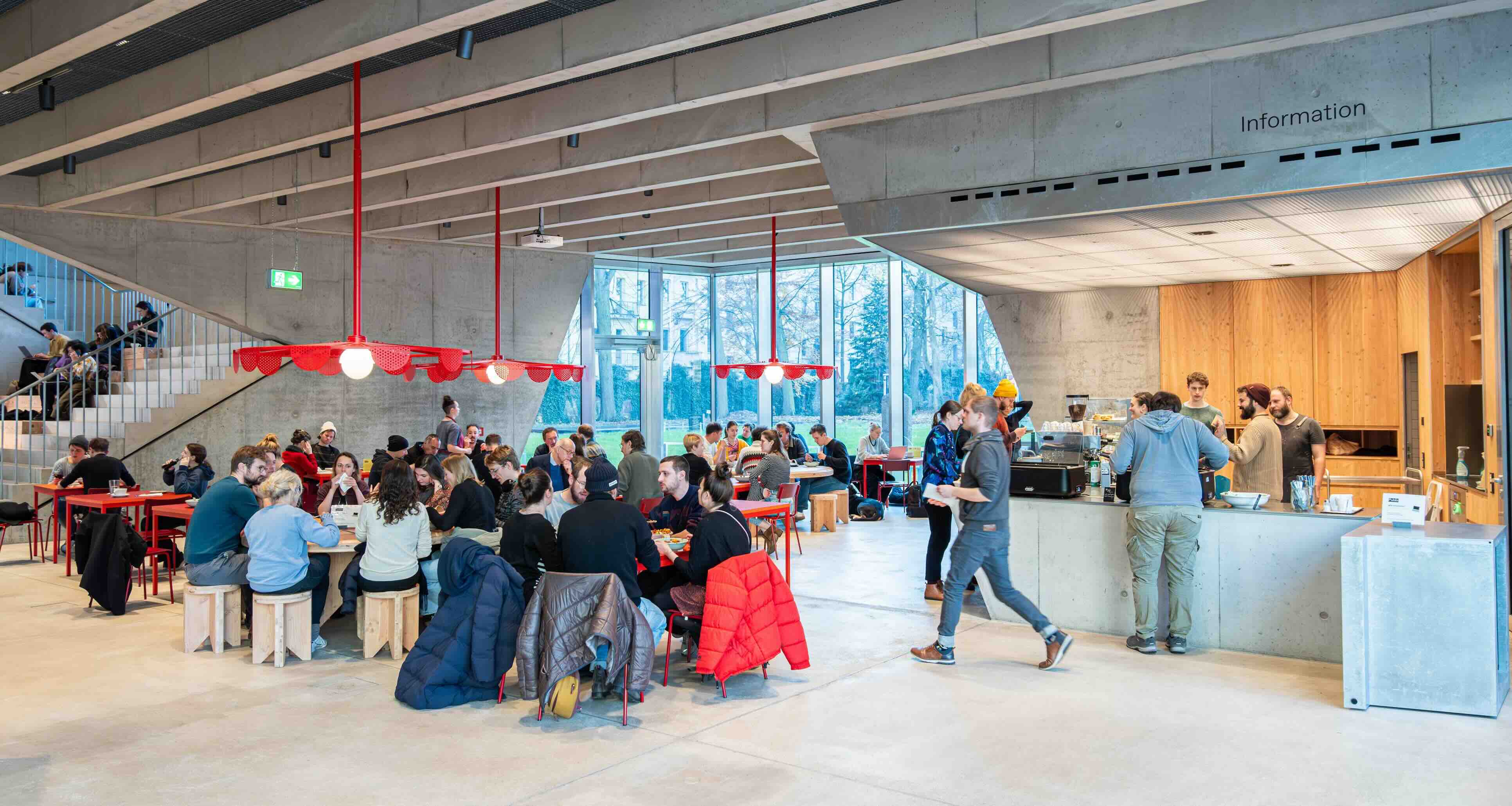
The publicly accessible ground floor of the Publix building in Germany. Credit: Paul Alexander Probst
In an age when most journalism is both produced and consumed digitally and where many reporters work remotely, what purpose does a physical newsroom still serve? I spoke with media managers at French newspaper Le Monde, news agency AFP, and innovative project Publix to learn what a fit-for-purpose newsroom building looks like. Their newsroom buildings, they told me, influence their editorial processes, provide value for staff, and carry symbolic weight both within their organisations and for the public. Here's what they think newsrooms are for in 2025.
The newsroom as an anchor
All the newsroom leaders I spoke to brought up the importance of the physical newsroom for the journalists themselves. Journalism is an emotionally taxing job, often defined by stress, public scrutiny and exposure to difficult events. A physical newsroom can serve as a place to process that stress collectively, offline and off-camera.
“Journalism is a tougher and tougher job these days. You go out [to report on a story] and people sometimes spit in your face, insult you, threaten you,” said Mehdi Lebouachera, Global Editor-in-Chief at AFP in Paris. “To be able to go back to an office and talk to your peers and feel supported is very important.”
Publix, a self-described ‘house for journalism’ in Berlin, was designed specifically to provide that space for smaller, more precarious journalism organisations.
“Journalists are facing a lot of challenges and backlash both politically and from the citizens we work for,” said Publix Director, Maria Exner. “We need spaces where we feel there is a community of people that is working on the same problems. Our mission is to take concerns around space off the shoulders of these journalists. They don't need to do anything else other than bring their laptops and start working.”
The organisation offers workspaces at discounted rates for non-profit media and civil society groups that work on information issues, with access to production studios, meeting rooms, and physical and digital security controls. It even has bookable on-site accommodation.
As well as providing literal spaces to produce stories, newsroom buildings can also have symbolic significance.
For instance, Lebouachera told me that AFP’s building history is an important part of the agency’s identity. During the occupation of Paris, the building was requisitioned as a Nazi propaganda office, before being stormed in 1944 by the resistance journalists who went on to found AFP. That legacy, he said, makes the building “very dear to the hearts of our journalists. It’s part of our DNA.”
And yet that sense of attachment sometimes clashes with financial or logistical realities. “There was some talk back in the day about selling the building and moving somewhere cheaper, outside the centre of Paris” he said, pointing out that the building, which AFP owns outright, is one of its most valuable financial assets. However, the agency didn't sell it. “The building is something our journalists are very attached to.”
Design as a reflection of editorial priorities
If having a building itself is valuable for a news organisation, its specific layout can also help (or hinder) its work. When the company which owns Le Monde began designing its new headquarters in 2015, the project was seen as an opportunity to build a space that would properly reflect its workflows.
Before that, the six titles in the group (of which Le Monde is the largest) were scattered across Paris, most of them renting space in older, ill-suited buildings. “For example, the old newsroom of Le Monde on Boulevard Auguste-Blanqui had been laid out according to whatever space was available,” said Gilles Van Kote, one of the deputy directors of Le Monde, who helped lead on the design of the space. “There was no coherence – it was just, ‘there’s room to put this desk here, let’s put it there.’ Some departments had to go down three floors to talk to other teams they collaborated with all the time.”
For the new building, Van Kote set up a working group that included journalists from each of the group's titles and took them to visit other newsrooms across Europe. From those visits, the team developed internal guidelines to help shape their plans. He says the result was a design that was genuinely fit-for-purpose, pointing to Le Monde’s two connected floors as an example:
“In the initial plans, the two floors where the Le Monde staff would sit were closed off from each other. That meant that if a journalist on the fourth floor wanted to talk to a colleague on the fifth, they would need to take a long detour via the lifts or the stairs. Obviously, this wasn’t ergonomic or fluid at all. Instead, I asked the architects to add a connection between the two floors, to make communication and workflows smoother within the newsroom. They came up with this spiral staircase [pictured below] that now lets people move freely,” he explains.
This space also serves as the paper’s main editorial meeting space, so that any staff who wants to attend the meeting (without necessarily participating) can do so from the mezzanine.
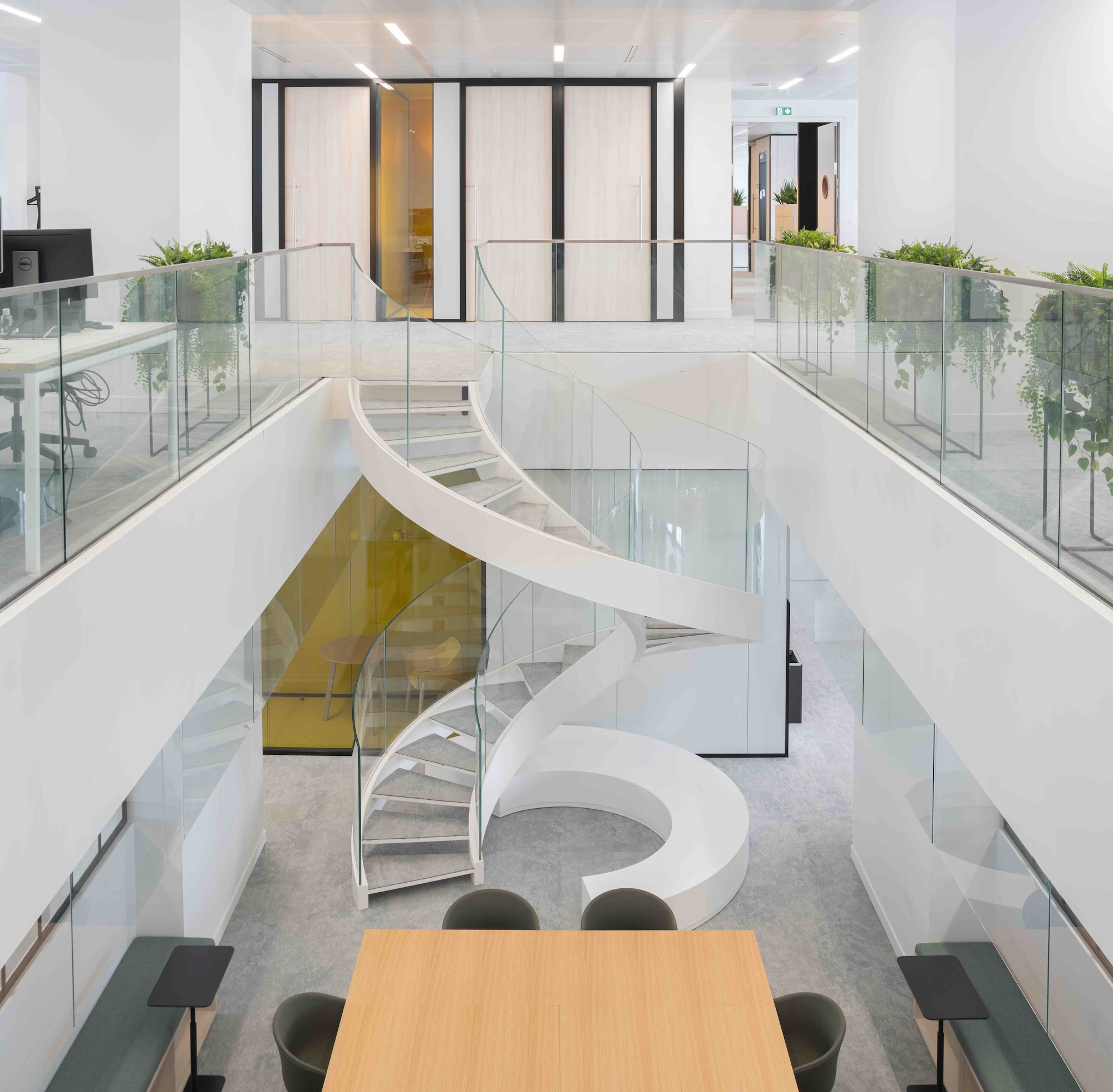
The team at AFP has also thought a lot about their layout. One key decision for the agency has been to place all of its senior leadership together on the same floor. Lebouachera says this has been good for efficiency in decision-making, but it also means they have to make an effort to fight the physical hierarchy that comes with it. “I tell my team they need to physically go down and talk to their direct reports on the floors below as often as they can,” he said.
This concern also influenced the design at Le Monde's media group. “We deliberately decided not to put Le Monde on the top two floors, because we didn’t want to symbolically overshadow the other titles in the group,” Van Kote said, referring to smaller titles like Nouvel Obs or Télérama. For that reason, the Nouvel Obs newsroom was placed on the top floor, and the team at Le Monde occupies the middle floors.
I also heard how design choices can signal the editorial priorities of a news organisation, whether implicitly or explicitly. For instance, AFP chose to put the ‘master control room’ (MRC), where all the agency’s live video feeds are managed, at the centre of the newsroom where each of the global desks are based.
“We are a live news agency, and this live operation is what drives our core coverage,” Lebouachera said. Placing the MRC physically in the centre helps the teams react quickly to breaking news.
A more cautionary example can perhaps be found in the now-defunct British tabloid News of the World. A recent academic book on media buildings cites an anecdote from Nick Davies’ 2014 book Hack Attack, in which he describes how in the middle of that paper’s newsroom hung a massive digital clock, in red, counting down the minutes to the next edition of the newspaper.
The clock was meant to put pressure on reporters to file stories quickly and competitively, which Davies says contributed to a culture of relentless pressure and dubious incentives that ultimately led to the infamous phone-hacking scandal which brought the newspaper down.
The building’s relationship to the public
While every news leader I spoke to agreed on the value of a physical newsroom and its intentional design, they didn't agree on the relationship that news buildings should have with the public.
“If you look at the AFP building from outside, it's not flashy with our logo in bright lights or anything. We have a different culture from other media – we're the person that works a bit more in the background,” said Lebouachera, who said this editorial tone is reflected in the building's understated exterior.
The building of the Groupe Le Monde is also discreet, despite its remarkable size: it covers a full 80 meters across the 13th arrondissement of Paris and accommodates 1600 employees. The group’s logos don’t feature anywhere on the building itself. If you miss the small street-level sign, you wouldn’t know it’s purpose. (I’ve walked past the building multiple times over the years without realising it was a newsroom.)

“That was a choice,” Van Kote told me. “The architectural design competition for this building was completed in 2015, just a few days after the Charlie Hebdo attacks. There was a real sense that media organisations could be targets, so having a degree of discretion was not necessarily out of place. It’s not a bunker, but people can’t just walk in.”
Le Monde does, however, open its doors to the public during its annual Festival du Monde, where directors of the newspaper take visitors into its offices for tours.
“[At the time of the Charlie Hebdo attacks], I was working at Die Zeit,” said Exner back at Publix. “Our newsroom was a ground floor open office, with glass windows looking out onto the street. From one day to the next, that suddenly felt very insecure. So I can totally understand the decision [to keep newsrooms inaccessible to the public]. Unfortunately, that can make the public feel that journalism is not for them, that it lives somewhere behind closed doors.”
This is one of the reasons Publix’s building takes the opposite approach, with a ground floor that's not only open to the public, but built for the public. This space includes a café and event spaces, with public debates and discussions hosted most Thursday evenings (the rest of the building is only accessible by keycard).
“I'm convinced that editorial teams and journalists need to be where the people they want to serve are, and the buildings where journalism is happening should enable these kinds of encounters,” Exner said.
This brings to mind the New York Times building, whose ground-floor lobby is also open to the public, with people using it as a shortcut between 40th and 41st Street, and which for many years featured an art exhibit for those passing by. The building’s glass facade is also meant to reflect the “transparency of the process” of its reporting and the newspaper's culture of openness.
A more direct example I've heard of a news building’s interaction with the public can be found in the local Italian paper L’Eco di Bergamo, which at the height of the COVID-19 pandemic turned its building into a physical extension of its reporting by installing a giant screen on the newsroom balcony to display the 5,000 obituaries of local residents who had died. This effectively turned the building into a public memorial while making the newspaper’s journalism literally visible on the street.
But beyond the symbolic power a newsroom building has for its staff and its audience, there is also a case to be made for the effects it might have on news-gathering itself.
In the book I mentioned earlier, the academic Ruth Moon looks at the case of France-Antilles, a local paper on the Caribbean island of Martinique that moved from a small, street-level office into a modern high-rise. Despite the comfort and amenities of the new space, one journalist interviewed by Moon felt the move was a mistake.
“It’s good for the comfort of the journalists and the editorial staff because where they were, it’s a slum compared to this,” he told her. “But I say it’s a mistake because the newspaper has felt cut off from the people. We were in the street; now, we’re no longer in the street – we’re above it. A journalist… has to hear the sounds from the streets, and here, we can’t hear anything.”
Moon notes how most of the journalists essentially described the new building as “a pretty space that was out of touch with the realities of life in Martinique… too modern; too cold; too tall; and too closed-off from public access to be a good fit for news production work.”
Still, the power a newsroom building has over all these factors is difficult to pin down, and may be easy to romanticise. As Le Monde's Van Kote told me at the end of our chat: “Marginally, the news building is important. But it’s not our building that makes up the core of our strength. It's our journalists and our subscribers.”
In every email we send you'll find original reporting, evidence-based insights, online seminars and readings curated from 100s of sources - all in 5 minutes.
- Twice a week
- More than 20,000 people receive it
- Unsubscribe any time
signup block
In every email we send you'll find original reporting, evidence-based insights, online seminars and readings curated from 100s of sources - all in 5 minutes.
- Twice a week
- More than 20,000 people receive it
- Unsubscribe any time


